Martin Mariner PBM-5A Royal Netherlands Navy Air Arm 1954-1960
The island of Papua New Guinea is the second largest island in the world.
From 1949 until 1962 the former Netherlands New Guinea belonged to the Kingdom of the Netherlands. In 1962 the territory was handed over to the Indonesian Authority.
In 1949 the island was divided into an eastern Australian part and a western Dutch part.
The Royal Netherlands Navy was responsible for the defense. Infra structure was extremely limited. Road’s inland was almost non existing. Most transportation was conducted by sea or by air. Airports also were sparsely, and mostly (Re) constructed (1942-1945) by the Imperial Japanese Navy/Army or after the landings from General MacArthur by the American Armed Forces. The main Dutch air base was located on the Island Biak. (See map)
As mentioned, limitations made the Catalina Flying Boat the most important asset in the inventory. All places were located on the coastline and were accessible by Catalina.
When the Catalina reached the end of its service time and under high (political/military) pressure to get replacements, the choice fell on the Martin PBM-5A Mariner with floats and landing gear. In comparison with the Catalina, the Mariner could load more cargo, more offensive firepower and could carry more marines to troubled spots on the island. Not to mention, the fair price the Government had to pay to the US Navy.
Seventeen airframes, plus spare parts were obtained. Also included was crew and technical assistance in the United States. Contracts were signed and in 1954 the Mariner subsequently became operational part of the Netherlands Navy.
Thirteen airframes were air ferried to the main Naval airbase on the island Biak. Four airframes were air ferried to The Netherlands. These long flights over large ocean areas had to be carefully planned. Besides technical problems causing delay along the way, all airframes made it safely to their respective destination.
The mariner was initially designed without a landing gear. Later development, saw the installation of a landing gear. The weight of the airframe by the Dutch type went 1880 kilo’s up, but the engine power remained the same. From the start, flying with the Mariner was to be more problematic than anticipated.
To make it even more complicated, it was decided in the Defense department, that the Mariners in Papua New Guinea, were to fly to The Netherlands for their complete overhaul. A trip around the world. The stage for disaster was set.
Due to condense and elevated temperatures, there were technical problems that kept the aircraft grounded and unreliable. Fatal incidents gave the aircraft eventually the name “Crew Killer.”
In total, eight Mariners crashed, taking the lives of thirty-two persons. This all happened in a brief time. It is on record, that flying officers refused to fly with the Mariner. A profoundly serious offense in an organization, which was on high alert due to the Indonesian policy of (military) confrontation.
The air frames were registered from 16-300 till 16-316. (16 stands for P from PAPPA)
P300 / 1955-1960 demolished Biak
P301 / 1955-1960 demolished Biak
P302 / 1955-1959 crashed Papitibaai Papua New Guinee
P303 / 1955-1958 crashed Abadan Iran
P304 / 1956-1960 demolished Biak
P305 / 1956-1958 crashed Haringvliet waterway The Netherlands
P306 / 1956-1959 crashed Goa India
P307 / 1956-1957 crashed Naval Air Base “Valkenburg” (near The Haque)
P308 / 1957-1960 demolished Aviolanda technical Aircraft Center the Netherlands.
P309 / 1957-1960 demolished Biak
P310 / 1957-1960 damaged during water landing, demolished Biak
P311 / 1957-1960 demolished Biak
P312 / 1957-1957 crashed merauke Papua New Guinee
P313 / 1957-1960 demolished Biak
P314 / 1957-1959 written off after water landing.
P315 / 1957-1958 used for spare parts.
P316 / 1957-1959 written off after hitting a reef.
Notes.
The airframes were manufactured after the second World War, and fairly new when they were handed over to the Royal Netherlands Navy. Eventually, the airframes were grounded and removed from registry in 1960. They were replaced, by the factory fresh, P2V-7B-Lockheed Neptune.
It is worth mentioning that the US Navy operated quite successful with the Mariner during the second world war. Commodore Leebeek, former Flag-Officer Fleet Air Arm Royal Netherlands Navy concludes, after studying all the small and fatal accidents in his book, that human error by pilots and technical personnel was the gross factor for the accidents. Due to the time pressure by introducing the aircraft to the fleet, education, crew training on all levels of the organization were not what it should have been. The complex airframe systems, electronics, shortage of spare parts did not help. Supplies had to be shipped from the The Netherlands to the area of responsibility. The maintenance in the hot and very humid climate was a constant headache. The quick rotation (technical experience) from squadron personnel with new members coming in from The Netherlands. The leadership from the Navy also bears responsibility. For instance, the long overhaul flight from Biak to the Netherlands.
(Biak-North Borneo-Singapore-Malacca-Ceylon-Karachi-Abadan-Athene- France- The Netherlands) This is one of the routes that could be followed.
After reading the full history in articles and books, I decided to build the Mini Craft scale model in scale 1/72. I used Eduard metal sets for internal and external use.
AK Duralium paints. Dutch Decal waterslide decals. Eventually it will be part of a diorama, depicting Jefman Air Strip, also located in same area.
Directory.
IPMS The Netherlands.
Onze Vloot.
Martin PBM-5A Mariner by Retired Naval Flag Officer Commodore Drs. Kees Leebeek.
ISBN 978-9-081-89365-7 http://www.geromybv.nl (Netherlands Language.)
Regards to all Modelers,
Dirk
The Netherlands.
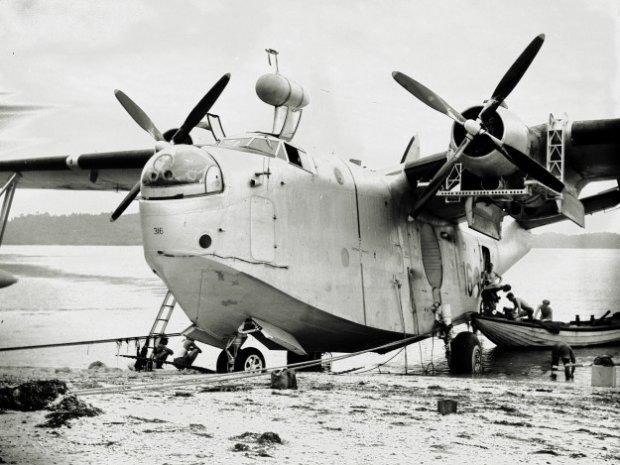
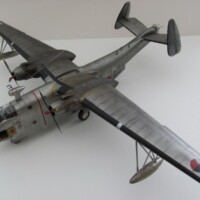











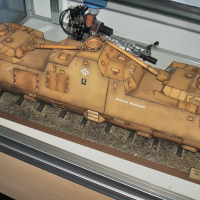
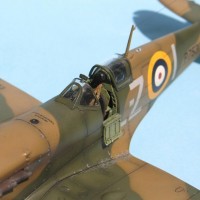
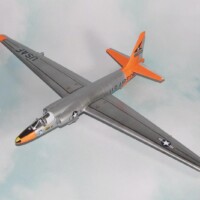
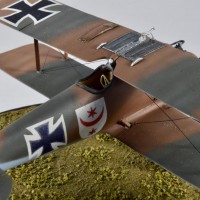
Awesome build! This looks great, i love the weathered metal finish.
Thanks Felix, my pleasure.
The metallic weathering is spot on! Nice work!
Hello Brian, 2x base cote of AK black followed by three layers of AK duralium. The weathering is done with pastel chalks (powder).
Excellent result, Dirk @orion
A not so often seen aircraft, especially not with Dutch markings.
To be honest, I was not even aware that we used these aircraft. I should be ashamed.
The weathering, like all the rest, looks perfect.
Hello John, thanks for your reply. Yes, these Mariners were big boys. As mentioned in the article, they were hard to handle without proper care.
Very nice work Dirk @orion. One doesn’t often see many PBM-5 builds for some reason as it seems like a fine model. Well researched article and you really went all out on this, but what do you have to say about the kit?
I have heard Mini Craft folded up shop and ceased production, so the Mariner kit may become hard to find.
https://minicraftmodels.com/
Hello Eric, the model is well constructed with a very clear instruction book. I added the eduard cockpit and exterior set. Due to the large cockpit glass you can actually see good inside. The throttles are constructed on the pilots overhead panel, also clearly visible. I opened all doors (port side door is not included) and constructed floors from balsa wood, so also thinside is completely decorated. Some pictures included. My only concern were the movable flaps. During handling the large object these flaps are easily damaged from there movable control surfaces.
Regards,
Dirk
3 attached images. Click to enlarge.
1. working panels are fragile
A real beauty! Love the weathering - very realistic. If I hadn't "downsized" and sold my MiniCraft Mariner from my stash, I would replicate your build, as it is a scheme I've never seen and looks great on the Mariner.
By the way - quick tip - to embed photos in the article, use the brackets [ ] around the pic numbers rather than the ( ).
Hi Greg, thanks for your kind response and the (bracket) tip. is corrected and extras picture of the real beast included.
Superb build, Dirk! This bird is so large in 1/72 I can't imagine the time you spent smoothing the seams to get such an outstanding natural metal effect and getting all those decals in place without silvering. You've also added lots of detail to the basic kit seamlessly (pun intended). If MiniCraft has folded, my thanks to them for leaving us with the two PBM kits, and more thanks to you for sharing this build with so many clear photos. Congratulations!
Hello Christopher, thanks for your kind response. Indeed, sanding was part of the process. But overall, the model was kind to me. The most tricky thing was the nose turret and getting the weight correct (80 grams) in box. see picture., to prevent it from being a tail sitter. see picture. Highest Regards, Dirk.
1 attached image. Click to enlarge.
An awesome build, Dirk! You don't see Mariners built that often, let alone in those splendid Dutch markings. Awesome accompanying article too! so many interesting facts, for which I had no idea!
Congratulations and have a happy and prosperous 2023!
Hello Spiros, Thanks for your kind words. Yes the postwar history concerning papua Dutch New Guinea is very interesting.
I send you the complete story in the link above.
Regards,
Dirk
This a really interesting model, Dirk. I never realized the Dutch Navy operated Mariners. Well done.
Hi John, with Mariners they could reach almost each location on the coast. By Spiros you see the link with the full history.
Here a link with the flying Mariner.in the former new Guinea. Thanks for your response.
https://www.youtube.com/watch?v=ig5Cm2dS5lQ
Great posting, Dirk, thanks for sharing this with us.
Not the greatest kit, from experience, but certainly a great result. A triumph of skill and persistence over plastic.
Hello Tom, good to read your comment. Especially with your background. As mentioned, the most difficult part was the nose turret. Regards, Dirk.
Great job on your Mariner Dirk. This is the first time I've seen this scheme on a built Mariner kit. Your weathering, streaks and base paint came out great!
Hello Bob, the airframes in papua new Guinea were all painted in duralium. The four frames that were ferried to the Netherlands had the typical overal US Navy blue.
Regards, Dirk
Nicely done Dirk, good to see you back.
Hello Allan, thanks. Appreciate your response. Will be posting more shortly.
Regards, Dirk The Netherlands.
Well done!
Nice build and an informative narrative! Nice to see a build of yours.
Hello Robert, good to hear from you. Thanks a lot for your kind response. I am happy with the fact, that my narrative was read by so many Imodelers. Highest Regards, Dirk
A bit late, but again a very nice build and dito painting.
I always admired your devotion and background research on your subjects.
I learned a lot thanks to your presence at the scale modelling club.
Keep up the good work
Hello Yves,
Never to late my dear friend. Much appreciated.
regards, Dirk.
Great!
Hello Capt. R.
Thanks for your kind response. It will be displayed in a diorama. Location will be "Jefman" Island. The most forward operation base from the Royal Netherlands Navy Air Arm in the former Netherlands New Guinea.
I am wrestling with the (Asiatic) palm trees at this moment.